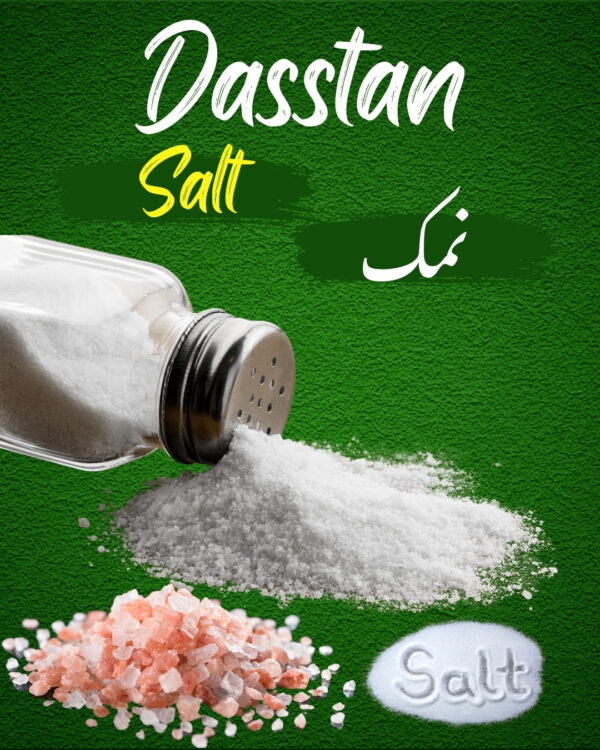Description
Salt (Namak)
Chemically, salt, most commonly referring to sodium chloride (NaCl), is an ionic compound. This naturally occurring mineral is primarily extracted from seawater or mined from underground deposits. Its crystalline structure and distinctive salty taste make it instantly recognizable.
In the kitchen, salt is an essential ingredient. It enhances the flavor of food, acts as a preservative, and plays a crucial role in various cooking processes. From a pinch in baked goods to the brining of meats, salt is a culinary cornerstone. Search terms like “cooking salt,” “kosher salt,” “sea salt,” and “Himalayan pink salt” reflect the diversity of culinary salt options available.
Beyond the kitchen, salt serves numerous industrial purposes. It’s used in water softening, de-icing roads, and in the production of chlorine and sodium hydroxide, which are vital components in various manufacturing processes. The “industrial salt” market is substantial, supporting industries from chemical production to textiles.
Health-wise, salt is essential for maintaining fluid balance and nerve function. However, excessive sodium intake can contribute to health issues like high blood pressure. Therefore, “low sodium salt” and “sodium intake” are important search terms for those concerned about their health.
Types of Salt and Their Uses:
- Table salt: Finely ground, often iodized.
- Sea salt: Evaporated seawater, varying in texture and mineral content.
- Kosher salt: Coarse-grained, ideal for seasoning during cooking.
- Himalayan pink salt: Mined from the Himalayas, known for its pink hue and mineral content.
- Rock salt: Coarse salt used for de-icing and industrial purposes.








Reviews
There are no reviews yet.